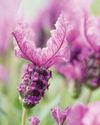
Before Van Riebeeck established a refreshment station at the Cape of Good Hope, this arum lily caught the eye of botanists and found its way to Europe in the 17th century. Our plain white arum has since morphed into what we have today - fantastic calla lilies in the most amazing colours and popular around the world. The deciduous summer rainfall species Z. Pentlandii and Z. Rehmannii with their narrow sword-like leaves also caught attention and growers in New-Zealand and The Netherlands and used them to breed fabulous arums in unbelievable colours which are popular the world over called calla lilies. These wonderful plants can be grown in the garden, but are more well known as houseplants to bring a touch of colour and brightness to the indoors.
How to get the best out of them
• Plant in rich, well-draining soil with added compost and drainage materials like bark chips or vermiculite.
• Give them plenty of water. Keep the soil moist but not waterlogged.
• Place in a brightly lit position and away from heating or air-conditioning units and drafts.
• Feed regularly – at least once a month in the growing season with a balanced liquid plant food.
• Reduce watering and feeding whenthe plant starts dying down in autumn and store the pots in a cool, dark place until spring. Cut off any dead foliage and stems. You can also lift and store the rhizomes to replant.
Problem solving
With proper care, calla lilies are easy to look after. However, there may be a time when they need some extra care. Here are some of the common problems and how to deal with them:
Esta historia es de la edición May 2023 de The Gardener.
Comience su prueba gratuita de Magzter GOLD de 7 días para acceder a miles de historias premium seleccionadas y a más de 9,000 revistas y periódicos.
Ya eres suscriptor ? Conectar
Esta historia es de la edición May 2023 de The Gardener.
Comience su prueba gratuita de Magzter GOLD de 7 días para acceder a miles de historias premium seleccionadas y a más de 9,000 revistas y periódicos.
Ya eres suscriptor? Conectar

FIRE AND Feathers!
On a dreary winter's day, a screen of fiery and feathery leaves puts up a fight against dullness!

GET THE ladies in!
At this time of year, early-flowering shrubs vie with each other to get the most attention. We say: Trust those with female names for frills and butterflies. They go the extra mile to flower their hearts out.

Vegetable Soups and dumplings
Vegetables make the most delicious soups and classic combinations are always a winner.

Yummy sweet potatoes for your good health
Boiled, baked or braaied, sweet potatoes (Ipomoea batatas) are a delicious and healthy winter comfort food. Just a dollop of butter, a little seasoning and you are good to go.

Pretty and functional
If cooking is your main thing, you would probably be more interested in the culinary value of the three herbs and some of their varieties we are describing.

Dried Seedheads & Pods
Autumn and winter are the best times to see what flowers produce the best seedheads that can be left on the plants to feed the birds and bugs and for harvesting for dried arrangements.

SO MANY FACES and so many choices...
Whoever associated a Cotyledon orbiculata (pig's ear) with the ear of a pig obviously did not know about all the varieties and cultivars this species in the genus Cotyledon has.

COLOURFUL Cold Weather WINNERS!
If it comes to a vote, these dependable shrubs will be the top candidates for prime performance in winter and in other seasons...

What makes a garden sustainable?
It is interesting to note that the United Nations defines sustainable development as: “development that meets the needs of the present without compromising the ability of future generations to meet their own needs”.

Nurturing NATURE-The Story of Kraal Garden's Transformation
Nestled within Prince Albert's rustic embrace lies a gem that is a testament to the transformative power of human vision and nature's bounty.